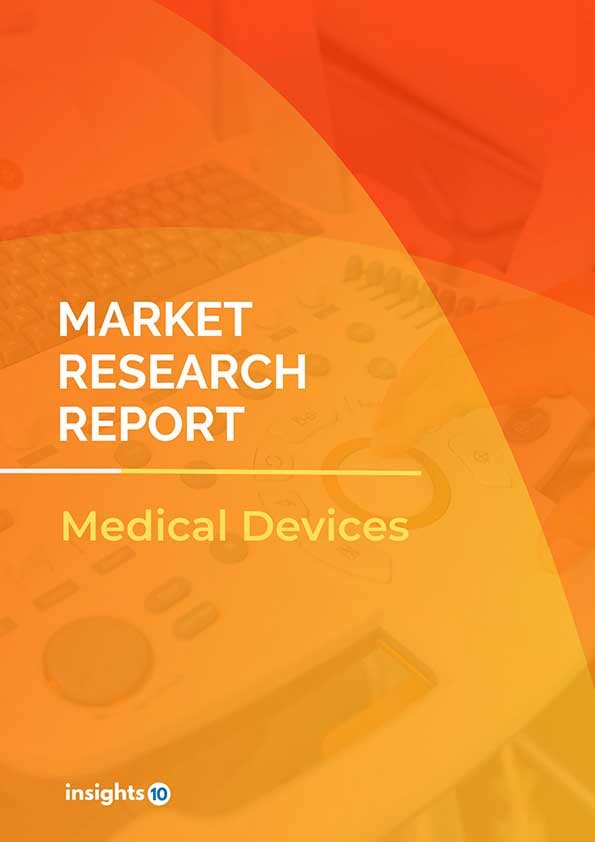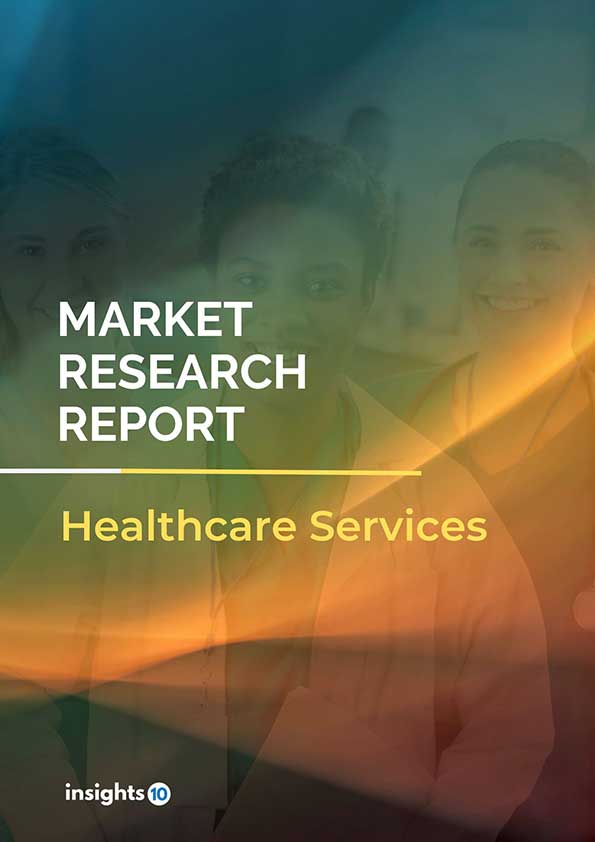Nigeria Liver Cancer Therapeutics Market Analysis
By 2030, it is anticipated that the Nigeria Liver Cancer Therapeutics market will reach a value of $10.3 Mn from $2.6 Mn in 2022, growing at a CAGR of 18.6 % during 2022-2030. Liver Cancer Therapeutics in Nigeria is dominated by a few domestic pharmaceutical companies such as Swiss Pharma Nigeria, Fidson Healthcare and Neimeth. The Liver Cancer Therapeutics market in Nigeria is segmented into different types of cancer and different therapy type. Some of the major factors affecting the Nigeria Liver Cancer Therapeutics market are the growing prevalence of liver cancer and the high cost and side effects related to certain liver cancer therapies.
Buy Now

Nigeria Liver Cancer Therapeutics Analysis Summary
By 2030, it is anticipated that the Nigeria Liver Cancer Therapeutics market will reach a value of $10.3 Mn from $2.6 Mn in 2022, growing at a CAGR of 18.6 % during 2022-2030.
Nigeria is a lower middle-income, developing country located in West Africa with a coast on the Gulf of Guinea and the Atlantic Ocean. The most common risk factors for liver cancer in Nigeria include chronic hepatitis B and C infections, heavy alcohol consumption, and exposure to aflatoxins. About 30% of the estimated cancers in Nigeria, were liver cancers attributed to alcohol drinking. According to the latest WHO data published in 2020 Liver Cancer Deaths in Nigeria reached 5,289 or 0.36% of total deaths.
The age-adjusted Death Rate is 6.19 per 100,000 population ranks Nigeria 71st in the world. To combat the growing incidence of liver cancer in Nigeria, better awareness, enhanced screening and diagnostic facilities, and increased access to effective therapies, particularly in rural areas, are required. Nigeria’s government spent 3.4 % of its GDP on healthcare in 2020.

Market Dynamics
Market Growth Drivers Analysis
Liver cancer is the fifth most prevalent and fourth fatal cancer in Nigeria, with more than 60% of patients aged 20 to 50 years. The frequency of liver cancer is increasing in Nigeria, with an estimated 14,000 new cases recorded each year. These aspects could boost Nigeria's Liver Cancer Therapeutics market.
Market Restraints
NAFLD is a disorder that affects people who don't drink but have a lot of fat in their livers. This illness, which is a risk factor for liver cancer, is growing more widespread in Nigeria. Adherence to regulatory guidelines established by agencies such as Nigeria's National Agency for Food and Drug Administration and Control is required while developing new medications and therapies (NAFDAC). Despite the Made in Nigeria (MINE) project's target of raising it to 20%, manufacturing activity represents barely 10% of Nigeria's GDP. These factors may deter new entrants into the Nigeria Liver Cancer Therapeutics market.
Competitive Landscape
Key Players
- Neimeth International Pharmaceuticals: Neimeth is a local pharmaceutical company that offers liver cancer drugs such as Doxorubicin, a chemotherapy drug used in the treatment of liver cancer
- Fidson Healthcare: Fidson Healthcare is a local pharmaceutical company that offers liver cancer drugs such as Sorafenib, a targeted therapy drug used in the treatment of liver cancer
- Swiss Pharma Nigeria: Swiss Pharma is a local pharmaceutical company that offers liver cancer drugs such as Capecitabine, a chemotherapy drug used in the treatment of liver cancer
- Drugfield Pharmaceuticals: Drugfield Pharmaceuticals is a local pharmaceutical company that offers liver cancer drugs such as Gemcitabine, a chemotherapy drug used in the treatment of liver cancer
- Jawa International: Jawa International is a local pharmaceutical company that offers liver cancer drugs such as Paclitaxel, a chemotherapy drug used in the treatment of liver cancer
Healthcare Policies and Reimbursement Scenarios
The regulation and reimbursement of liver cancer therapeutics in Nigeria are overseen by the National Agency for Food and Drug Administration and Control (NAFDAC) and the National Health Insurance Scheme (NHIS), respectively. NAFDAC is responsible for regulating the importation, manufacture, distribution, and sale of drugs and other medical products in Nigeria, including those used for liver cancer treatment. The NHIS is a government-funded health insurance program in Nigeria that provides coverage for a range of medical services, including cancer treatment.
1. Executive Summary
1.1 Disease Overview
1.2 Global Scenario
1.3 Country Overview
1.4 Healthcare Scenario in Country
1.5 Patient Journey
1.6 Health Insurance Coverage in Country
1.7 Active Pharmaceutical Ingredient (API)
1.8 Recent Developments in the Country
2. Market Size and Forecasting
2.1 Epidemiology of Disease
2.2 Market Size (With Excel & Methodology)
2.3 Market Segmentation (Check all Segments in Segmentation Section)
3. Market Dynamics
3.1 Market Drivers
3.2 Market Restraints
4. Competitive Landscape
4.1 Major Market Share
4.2 Key Company Profile (Check all Companies in the Summary Section)
4.2.1 Company
4.2.1.1 Overview
4.2.1.2 Product Applications and Services
4.2.1.3 Recent Developments
4.2.1.4 Partnerships Ecosystem
4.2.1.5 Financials (Based on Availability)
5. Reimbursement Scenario
5.1 Reimbursement Regulation
5.2 Reimbursement Process for Diagnosis
5.3 Reimbursement Process for Treatment
6. Methodology and Scope
Liver Cancer Therapeutics Segmentation
By Type (Revenue, USD Billion):
- Hepatocellular Carcinoma
- Cholangio Carcinoma
- Hepatoblastoma
- Other Types
By Treatment (Revenue, USD Billion):
- Chemotherapy
- Immunotherapy
- Targeted Therapy
- Radiation Therapy
- Ablation Therapy
- Embolization Therapy
By Equipment (Revenue, USD Billion):
- Computed Radiography
- MRI
- Sonography
- Others
By Route of Administration (Revenue, USD Billion):
- Oral
- Intravenous
By End User (Revenue, USD Billion):
- Hospitals
- Clinics
- Ambulatory Surgical Centers
Methodology for Database Creation
Our database offers a comprehensive list of healthcare centers, meticulously curated to provide detailed information on a wide range of specialties and services. It includes top-tier hospitals, clinics, and diagnostic facilities across 30 countries and 24 specialties, ensuring users can find the healthcare services they need.
Additionally, we provide a comprehensive list of Key Opinion Leaders (KOLs) based on your requirements. Our curated list captures various crucial aspects of the KOLs, offering more than just general information. Whether you're looking to boost brand awareness, drive engagement, or launch a new product, our extensive list of KOLs ensures you have the right experts by your side. Covering 30 countries and 36 specialties, our database guarantees access to the best KOLs in the healthcare industry, supporting strategic decisions and enhancing your initiatives.
How Do We Get It?
Our database is created and maintained through a combination of secondary and primary research methodologies.
1. Secondary Research
With many years of experience in the healthcare field, we have our own rich proprietary data from various past projects. This historical data serves as the foundation for our database. Our continuous process of gathering data involves:
- Analyzing historical proprietary data collected from multiple projects.
- Regularly updating our existing data sets with new findings and trends.
- Ensuring data consistency and accuracy through rigorous validation processes.
With extensive experience in the field, we have developed a proprietary GenAI-based technology that is uniquely tailored to our organization. This advanced technology enables us to scan a wide array of relevant information sources across the internet. Our data-gathering process includes:
- Searching through academic conferences, published research, citations, and social media platforms
- Collecting and compiling diverse data to build a comprehensive and detailed database
- Continuously updating our database with new information to ensure its relevance and accuracy
2. Primary Research
To complement and validate our secondary data, we engage in primary research through local tie-ups and partnerships. This process involves:
- Collaborating with local healthcare providers, hospitals, and clinics to gather real-time data.
- Conducting surveys, interviews, and field studies to collect fresh data directly from the source.
- Continuously refreshing our database to ensure that the information remains current and reliable.
- Validating secondary data through cross-referencing with primary data to ensure accuracy and relevance.
Combining Secondary and Primary Research
By integrating both secondary and primary research methodologies, we ensure that our database is comprehensive, accurate, and up-to-date. The combined process involves:
- Merging historical data from secondary research with real-time data from primary research.
- Conducting thorough data validation and cleansing to remove inconsistencies and errors.
- Organizing data into a structured format that is easily accessible and usable for various applications.
- Continuously monitoring and updating the database to reflect the latest developments and trends in the healthcare field.
Through this meticulous process, we create a final database tailored to each region and domain within the healthcare industry. This approach ensures that our clients receive reliable and relevant data, empowering them to make informed decisions and drive innovation in their respective fields.
To request a free sample copy of this report, please complete the form below.
We value your inquiry and offer free customization with every report to fulfil your exact research needs.









































